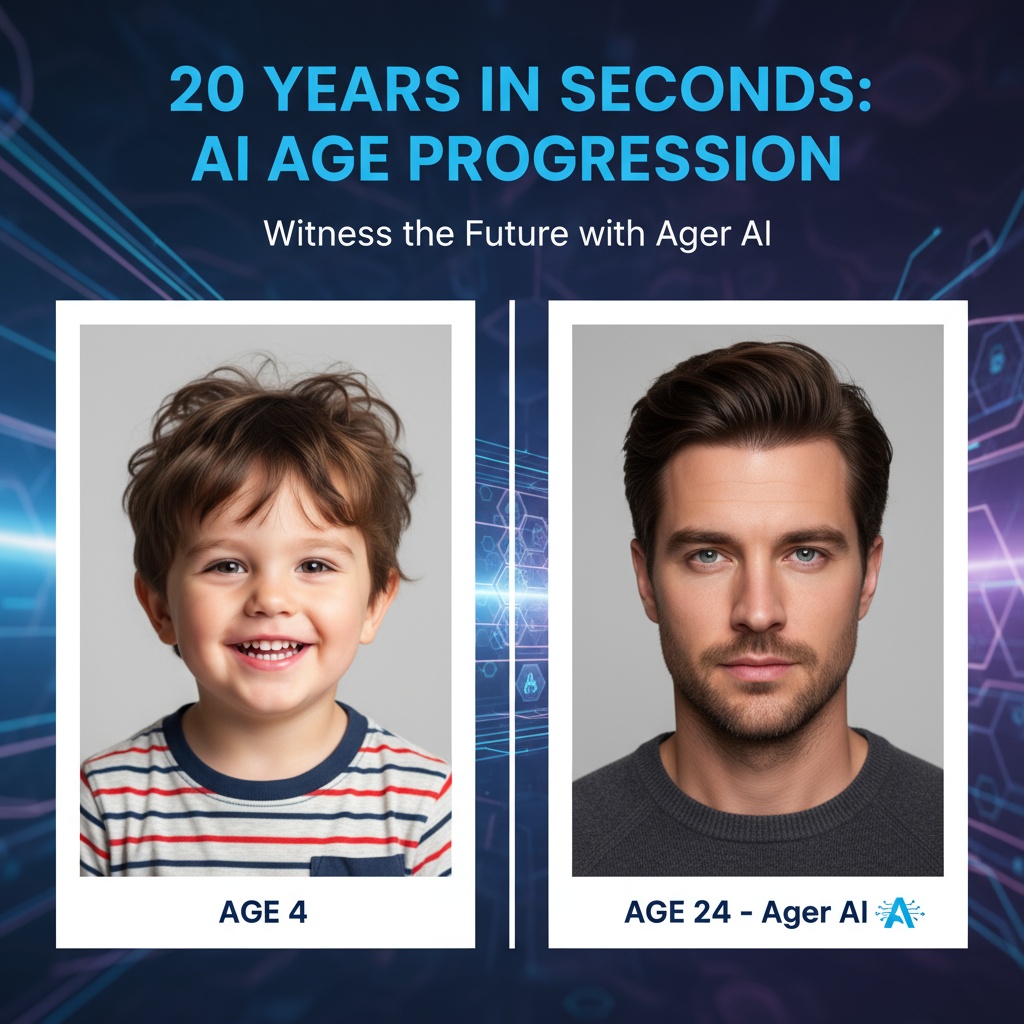Ager's Role in Crime Investigation Support
Discover how the Ager tool aids law enforcement in cold cases by visualizing age progressions of individuals. Learn how this can assist in finding long-lost persons.

Unlocking Cold Cases with Ager: A New Tool for Investigators
In the world of criminal investigation, age progression is a vital technique used to find missing persons who have been gone for extended periods. The Ager tool, with its ability to apply natural-looking age transformations, is revolutionizing how investigators approach these cases. It offers real-world applications that can lead to breakthroughs in seemingly insurmountable investigations.
The Problem
Many cold cases remain unresolved due to the lack of age-accurate visual representations of missing individuals. Traditional methods can be slow and less detailed, often relying on extensive manual sketching or outdated software that does not fully capture a person's aging process. This is where Ager comes into play by bringing advanced AI age progression to the forefront.
Ager's Solution
With its AI capabilities, Ager generates natural-looking images of individuals at different ages, providing detectives with accurate visuals. This can help trigger memories in witnesses or the public when disseminating images through media outlets.
Here's how investigators can utilize Ager:
- Generating Age Progressions: By using existing photographs of a missing person, investigators can use Ager to create images that reflect current appearances. For example, a photograph of a 10-year-old can be processed to show how they might look at 20 or 30 years of age.
- Dissemination of Images: The generated images can be broadcast via news outlets, social media, and missing person alerts, reaching a wider audience and increasing the chances of recognition.
- Collaboration with Families: By involving families in the process, investigators can ensure the generated images align with familial aging patterns, increasing realism.
Example Scenario
Consider a scenario where a child went missing a decade ago. Traditional photos may no longer be useful in identifying the individual. With Ager, investigators can create a realistic portrayal of how the person might appear today. Suppose John's last photo was at 8 years old. Using Ager, investigators can generate an image of John at 18, which can be crucial in efforts to locate him.
Actionable Tips
- Ensure you use the highest quality initial photographs for the best results.
- Collaborate regularly with family members for feedback on the generated images.
- Utilize Ager's varied settings to adjust features such as weight or hairstyle, adding layers of detail to the imagery.
Prompt Examples
Investigators can achieve better results with effective prompts:
"Generate a 20-year progression of a child's photograph for a missing person alert.""Create an age progression image showing two decades of aging for a missing child from a family photo."Conclusion
By incorporating Ager into investigative workflows, law enforcement can address and potentially close more cold cases. This tool not only provides precise age representations but also offers hope to families and communities tirelessly searching for loved ones.
